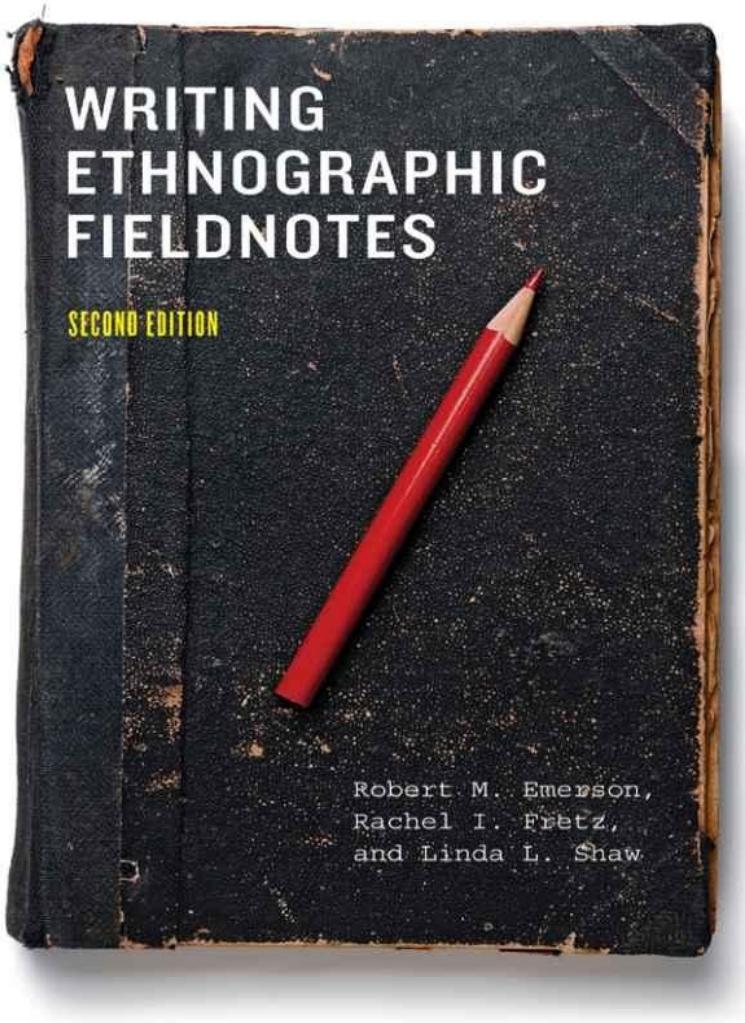Writing Ethnographic Fieldnotes by Robert M. Emerson

Author:Robert M. Emerson [Emerson, Robert M.]
Language: eng
Format: epub, pdf
ISBN: 9780226206868
Publisher: University of Chicago Press
Published: 2011-09-15T05:00:00+00:00
Here, the researcher offers âimproved a littleâ as his own characterization of the youthâs recent period of probation. In doing so, he is clearly repeating the view of the probation officer, since a bit later in the notes, the latter characterized the report in just these terms. But, in uncritically taking over a memberâs description in this way, the researcher treats âimproved a littleâ as a fact, failing to appreciate its character as a formulation. He also neglects considering both how the probation officer interpreted âprogressâ and âimprovementâ and what âfactsâ or developments she attended to in making these determinations. Furthermore, treating âimproved a littleâ as a âfact,â rather than as a formulation, ignores the possibility that this meaning was constructed in a specific context for a particular reason; for example, the probation officer may have been sensitive to the youthâs presence and, in order to keep up the latterâs morale, offered this characterization to tone down a more negative evaluation.11
In general, it is particularly tempting to privilege descriptions provided by official documents, viewing them as a simple record of relevant âfactsâ recorded in transparent and unproblematic ways. But ethnographically, it is more useful to recognize that descriptions incorporated into such documents are both highly selective and rife with formulations. A probation report and recommendation, for example, is not a simple factual record of a youthâs behavior but, rather, a highly selective summary and interpretation that reduces complex and often contested events to one particular form. Thus, rather than simply treating reports as objective records, an ethnographer should seek to understand how such documents are constructed, read, and interpreted by members. In practice, this requires looking closely at what members see as significant in a report, how they characterize its âgistâ or âbottom lineâ; it also requires writing fieldnotes that recount both what is in the document (and, if possible, what gets left out) and how the member interprets and responds to it.12
Download
Writing Ethnographic Fieldnotes by Robert M. Emerson.pdf
This site does not store any files on its server. We only index and link to content provided by other sites. Please contact the content providers to delete copyright contents if any and email us, we'll remove relevant links or contents immediately.
Cecilia; Or, Memoirs of an Heiress — Volume 1 by Fanny Burney(32503)
Cecilia; Or, Memoirs of an Heiress — Volume 2 by Fanny Burney(31914)
Cecilia; Or, Memoirs of an Heiress — Volume 3 by Fanny Burney(31900)
The Great Music City by Andrea Baker(31761)
We're Going to Need More Wine by Gabrielle Union(19004)
All the Missing Girls by Megan Miranda(15790)
Pimp by Iceberg Slim(14441)
Bombshells: Glamour Girls of a Lifetime by Sullivan Steve(14024)
For the Love of Europe by Rick Steves(13651)
Talking to Strangers by Malcolm Gladwell(13305)
Norse Mythology by Gaiman Neil(13289)
Fifty Shades Freed by E L James(13189)
Mindhunter: Inside the FBI's Elite Serial Crime Unit by John E. Douglas & Mark Olshaker(9268)
Crazy Rich Asians by Kevin Kwan(9225)
The Lost Art of Listening by Michael P. Nichols(7456)
Enlightenment Now: The Case for Reason, Science, Humanism, and Progress by Steven Pinker(7275)
The Four Agreements by Don Miguel Ruiz(6705)
Bad Blood by John Carreyrou(6586)
Weapons of Math Destruction by Cathy O'Neil(6221)
